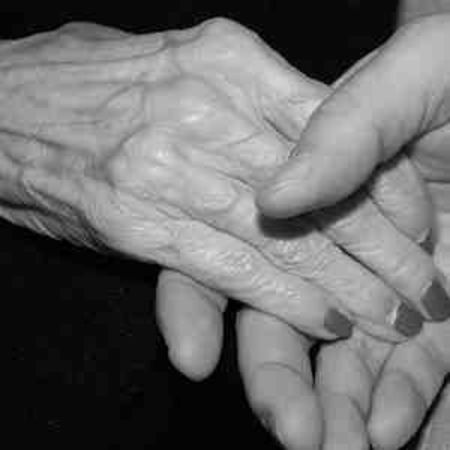The transition to end-of-life care (EOLC) is a difficult process for healthcare staff, patients and their families, whatever the setting. End-of-life care (EOLC) for cancer patients in the ICU has not been frequently studied. A paper published in Annals of Intensive Care as an epublication ahead of print explored the quality of transition to EOLC for cancer patients and if clinical parameters that might predict likelihood of transition to EOLC early in patients’ admission could be determined.
Sophie Miller and colleagues from the Royal Marsden Hospital, a specialist cancer hospital, explored quality of transition to EOLC amongst patients in the ICU over six months. They also reviewed clinical parameters on ICU admission to see if they could be used to identify patients who were likely to transition to EOLC during their ICU stay. The unit does not have a formal EOLC protocol, but ICU and palliative care consultants undergo communication skills training, there are multidisciplinary team rounds and the palliative care team is included in ICU multidisciplinary team and regular family meetings.
85 patients were included. Nearly half (44.7%) transitioned to EOLC. Of these only one patient was admitted for symptom control alone; the others were admitted for full management. Analysis of these patients’ records showed that healthcare teams, patients and families did collaborate on decisions to transition to EOLC, and evidence of transition from full active care to EOLC was evident in their records (37/38 (97.4%)). The median age and APACHE II score was higher in the EOLC patients than in the full active ICU care group (66.5 vs. 59 years, p = 0.017) and (21 vs. 16, p < 0.0001), respectively. The EOLC group required a higher level of organ support, but cancer diagnosis was not significant. 51.4% of patients were not well enough to discuss transition to EOLC and 40.5% were unable to discuss instructions to not attempt cardiopulmonary resuscitation (DNACPR).
The authors note that their results showed frequent communication between teams and relatives during transition to EOLC. Their findings were supported by the qualitative analysis, which illustrated that families understood the appropriateness of transitions to EOLC, and were keen to avoid suffering when reversal of the underlying condition was impossible.
The authors conclude “Advanced EOLC planning in patients with progressive disease prior to acute deterioration is warranted to enable patients' wishes to be fulfilled and ceiling of treatments agreed. Better documentation and development of validated tools to measure the quality EOLC transition on the ICU are needed.”
They acknowledge that their study is limited by the fact that data was collected retrospectively and quality of communication cannot always be gathered from documented data. They recommend larger studies to identify and validate clinical factors that may help identify patients with cancer who are likely to transition to EOLC during their ICU stay.
Sophie Miller and colleagues from the Royal Marsden Hospital, a specialist cancer hospital, explored quality of transition to EOLC amongst patients in the ICU over six months. They also reviewed clinical parameters on ICU admission to see if they could be used to identify patients who were likely to transition to EOLC during their ICU stay. The unit does not have a formal EOLC protocol, but ICU and palliative care consultants undergo communication skills training, there are multidisciplinary team rounds and the palliative care team is included in ICU multidisciplinary team and regular family meetings.
85 patients were included. Nearly half (44.7%) transitioned to EOLC. Of these only one patient was admitted for symptom control alone; the others were admitted for full management. Analysis of these patients’ records showed that healthcare teams, patients and families did collaborate on decisions to transition to EOLC, and evidence of transition from full active care to EOLC was evident in their records (37/38 (97.4%)). The median age and APACHE II score was higher in the EOLC patients than in the full active ICU care group (66.5 vs. 59 years, p = 0.017) and (21 vs. 16, p < 0.0001), respectively. The EOLC group required a higher level of organ support, but cancer diagnosis was not significant. 51.4% of patients were not well enough to discuss transition to EOLC and 40.5% were unable to discuss instructions to not attempt cardiopulmonary resuscitation (DNACPR).
The authors note that their results showed frequent communication between teams and relatives during transition to EOLC. Their findings were supported by the qualitative analysis, which illustrated that families understood the appropriateness of transitions to EOLC, and were keen to avoid suffering when reversal of the underlying condition was impossible.
The authors conclude “Advanced EOLC planning in patients with progressive disease prior to acute deterioration is warranted to enable patients' wishes to be fulfilled and ceiling of treatments agreed. Better documentation and development of validated tools to measure the quality EOLC transition on the ICU are needed.”
They acknowledge that their study is limited by the fact that data was collected retrospectively and quality of communication cannot always be gathered from documented data. They recommend larger studies to identify and validate clinical factors that may help identify patients with cancer who are likely to transition to EOLC during their ICU stay.
References:
Miller SJ, Desai N, Pattison N, Droney JM, King A, Farquhar-Smith P,
Gruber PC (2015) Quality of transition to end-of-life care for cancer patients in the intensive care unit. Ann Intensive Care, 5(1): 59. doi:
10.1186/s13613-015-0059-7. Epub 2015 Jul 25
Latest Articles
End of life care, ICU, Cancer patients
Study on cancer patients in an ICU and how they transition to end of life care



























